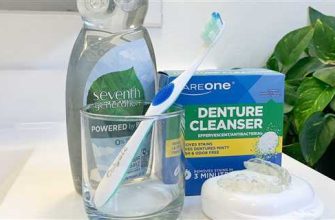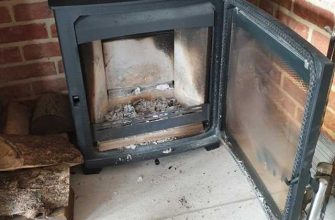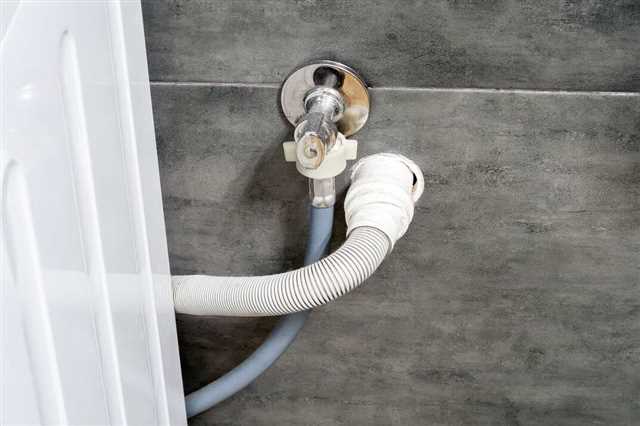
If you’ve ever experienced an unpleasant smell coming from your washing machine or have noticed that water is not draining properly, you may have a clogged drain. This is a common problem that most washing machine owners will encounter at some point, but luckily there are ways to fix it.
When a washing machine drain gets clogged, it can cause water to back up and create a mess. The most common cause of clogs is a buildup of lint, hair, soap scum, and other debris. If left untreated, these clogs can lead to poor drainage, leaks, and even damage to the washing machine itself.
There are several ways to unclog a washing machine drain, but the best approach will depend on the severity of the clog. For mild clogs, simple techniques such as pouring hot water, baking soda, or vinegar down the drain can often do the trick. For more severe clogs, you may need to manually clear the drain using tools such as a plumber’s snake or a high-pressure water spray.
Before attempting any of these methods, it’s important to consult your washing machine’s manual for specific instructions. This will ensure that you use the right solution for your particular machine and avoid causing any damage. It’s also a good idea to have some towels on hand to catch any water that may leak out during the cleaning process.
In some cases, clearing a clogged drain may not be enough to solve the problem. If you continue to experience issues with your washing machine’s drain even after it has been cleaned, it may be a sign of a more serious issue with the machine’s plumbing system. In this case, it’s best to contact a professional plumber for a thorough inspection and the right solution.
In conclusion, fixing clogged washing machine drains is a common task that many homeowners will have to tackle at some point. With the right tools and techniques, you can easily unclog a drain and get your washing machine back to working properly. However, if you’re not comfortable doing it yourself or if the problem persists, it’s always better to seek professional help to avoid any further damage or complications.
- The Best Way to Fix Clogged Washing Machine Drains
- 1. Manual Removal
- 2. Use Baking Soda and Vinegar
- 3. Try a Plumber’s Snake
- 4. Salt and Soda Crystals
- When to Call a Professional
- Identifying the Problem
- Common Causes of Clogged Washing Machine Drains
- Signs of a Clogged Washing Machine Drain
- How to Identify the Problem
- Preventing Future Clogs
- DIY Solutions for Clogged Washing Machine Drains
- 1. Use a Drain Cleaning Solution
- 2. Try Vinegar and Baking Soda
- 3. Clear the Drain Pipe with a Snake
- 4. Check the Drainage Hose
- 5. Prevent Future Clogging
- Final Thoughts
- Professional Drain Cleaning Services
- The Common Causes of Clogged Washing Machine Drains
- The Best Solution: Professional Drain Cleaning Services
- The Benefits of Professional Drain Cleaning Services
- Preventing Clogged Washing Machine Drains
- 1. Use a lint filter
- 2. Watch what you pour
- 3. Clean the drain line
- 4. Prevent buildup with high-pressure water
- 5. Avoid using harsh cleaners
- 6. Regularly clean your washing machine
- Video:
- Washer Repair: How to Unclog the Drain Pump
The Best Way to Fix Clogged Washing Machine Drains
Dealing with a clogged washing machine drain is never a pleasant experience. It can cause water to back up and flood your laundry area, resulting in a long and messy clean-up process. Fortunately, there are several DIY techniques you can try before calling a professional plumber.
1. Manual Removal
If you suspect that clothing or other items have gotten stuck in the drain line, you can try manually removing them. Start by unplugging your washing machine and carefully pulling it away from the wall to access the drain hose. Use a wire hanger or similar tool to gently fish out any obstructions.
2. Use Baking Soda and Vinegar
A mixture of baking soda and vinegar can help unclog your washing machine drain. Start by pouring one cup of baking soda down the drain, followed by two cups of vinegar. Let the mixture sit for 15 minutes, then flush it out with hot water. This can help break up any built-up grime or soap residue.
3. Try a Plumber’s Snake
If the clog is severe enough, a plumber’s snake may be necessary. This tool can help break up and remove stubborn blockages that are causing poor draining. Insert the snake into the drain pipe and rotate it clockwise to dislodge the clog. Be sure to follow the manufacturer’s instructions for proper use.
4. Salt and Soda Crystals
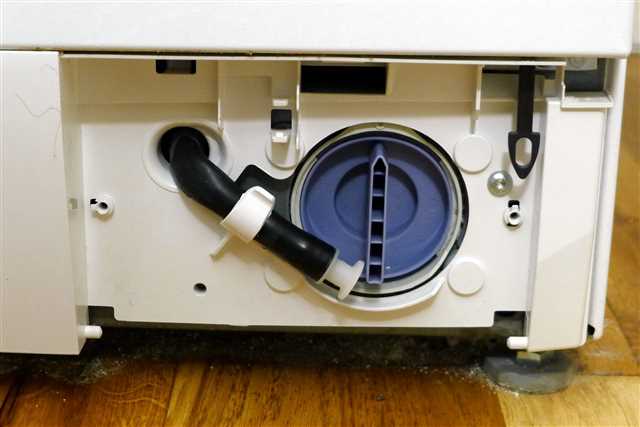
Another DIY method involves using a mixture of salt and soda crystals. Combine half a cup of salt and half a cup of soda crystals, then pour the mixture into the clogged drain. Follow this with boiling water to help dissolve the blockage. Repeat this process if necessary until the drain is clear.
When to Call a Professional
If you’ve tried these DIY techniques and the drain is still clogged, or if you’re unsure about the cause of the clog, it’s best to call a professional plumber. They have the tools and expertise to diagnose and fix the problem efficiently and safely.
Remember, prevention is always better than having to deal with a clogged drain. Avoid washing clothing with excessive lint or debris, and regularly clean your washing machine to prevent build-up. By being proactive and following these tips, you can help keep your washing machine drains clear and avoid any unpleasant surprises.
Identifying the Problem
When your washing machine drain becomes clogged, it can be frustrating and inconvenient. Understanding the common culprits behind a clogged drain can help you identify the problem and find the best way to fix it.
Common Causes of Clogged Washing Machine Drains
1. Clothing: One of the most common causes of a clogged washing machine drain is clothing items. Small pieces of fabric, such as socks or underwear, can make their way into the drain pipe and cause a blockage.
2. Soap Scum: Soap residue and scum can accumulate in the drain over time. This buildup can restrict water flow and lead to a clogged drain.
3. Mineral Deposits: Hard water can leave mineral deposits in your washing machine drain, leading to clogs. These deposits can accumulate over time and reduce the efficiency of your machine.
Signs of a Clogged Washing Machine Drain
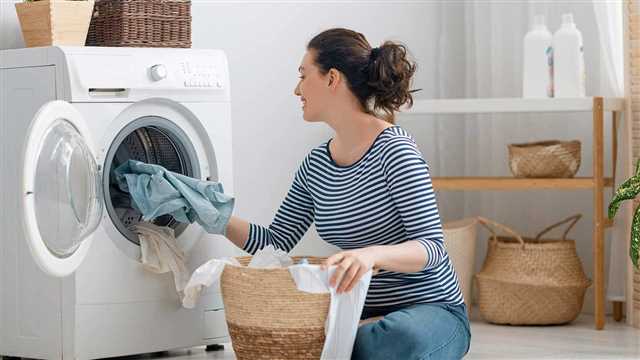
If you notice any of the following signs, it may indicate that your washing machine drain is clogged:
- Water backup in the sink or bathtub when the washer is draining
- Slow draining or standing water in the washing machine drum
- An unpleasant smell coming from the drain or washing machine
How to Identify the Problem
If you suspect a clogged washing machine drain, there are a few steps you can take to identify the issue:
- Check for visible blockages: Start by visually inspecting the drain pipe and the area around it. Look for any clothing items or debris that may be blocking the pipe.
- Inspect the drain hose: Detach the drain hose from the back of the washing machine and inspect it for any clogs or obstructions. Simply removing the hose and cleaning it can often solve the problem.
- Use a snake or pipe cleaner: If the blockage is deeper in the drain pipe, you may need to use a snake or pipe cleaner to remove it. Follow the manufacturer’s instructions for using these tools safely and effectively.
Preventing Future Clogs
To prevent future clogs in your washing machine drain, consider taking the following preventive measures:
- Use a mesh laundry bag: Put smaller clothing items, such as socks or underwear, in a mesh laundry bag before washing them. This will help prevent them from getting into the drain.
- Run hot water regularly: Running hot water through your washing machine can help dissolve soap scum and prevent buildup in the drain.
- Clean your washing machine regularly: Follow the manufacturer’s instructions for cleaning your washing machine. This will help remove any mineral deposits or soap residue that may lead to clogs.
If you’ve tried these solutions and your washing machine drain is still clogged, it may be best to call a professional plumber to assess the issue and provide a solution.
DIY Solutions for Clogged Washing Machine Drains
A clogged washing machine drain can be a frustrating problem to deal with. When your washing machine is not draining properly, it can lead to leaks, unpleasant odors, and even damage to your home. Fortunately, there are several DIY solutions you can try to fix a clogged washing machine drain without having to call a professional plumber.
1. Use a Drain Cleaning Solution
One of the simplest and most effective ways to unclog a washing machine drain is by using a drain cleaning solution. There are many commercial drain cleaning products available on the market that are specifically designed to remove clogs in washing machine drains. Follow the instructions on the product carefully to use it safely and effectively.
2. Try Vinegar and Baking Soda
If you prefer a more natural solution, you can try using vinegar and baking soda to unclog your washing machine drain. Start by pouring a cup of baking soda into the drain, followed by a cup of vinegar. Let the mixture sit in the drain for about 30 minutes, then flush it out with hot water. The fizzing action of the vinegar and baking soda can help break up and remove the clog.
3. Clear the Drain Pipe with a Snake
If the above methods don’t work, you may need to physically remove the clog from the drain pipe using a snake. A snake is a long, flexible tool that can be inserted into the drain pipe to break up and remove the clog. Insert the snake into the drain and rotate it to dislodge the clog. Pull the snake out carefully, removing any debris that comes out with it.
4. Check the Drainage Hose
Sometimes, a clogged washing machine drain is caused by a blockage in the drainage hose rather than the main sewer line. If you find that water is not moving through the drainage hose effectively, remove the hose from the machine and check for any blockages. Use a spray of water or a long, flexible object to clear the hose if necessary.
5. Prevent Future Clogging
To prevent clogs in your washing machine drain, there are several things you can do. First, always check and empty the pockets of your clothing before washing, as small items like coins or keys can cause clogs. Second, use a mesh laundry bag for small items like socks or underwear that are more likely to get tangled and cause clogs. Lastly, avoid overloading your washing machine, as this can strain the drain pump and lead to poor draining.
Final Thoughts
A clogged washing machine drain is a common problem that can be easily dealt with using DIY methods. By using drain cleaning solutions, vinegar and baking soda, snaking the drain pipe, checking the drainage hose, and taking preventive measures, you can keep your washing machine drain clean and functioning properly without the need for professional help.
Professional Drain Cleaning Services
The Common Causes of Clogged Washing Machine Drains
Homeowners often find themselves dealing with clogged drains in their washing machines. Poor draining can be the result of various culprits, such as pipes that have been clogged by hair, soap scum, or other debris. Sometimes, the problem lies with the drain pipe itself, which may be too narrow or have a blockage caused by accumulated dirt and grime.
Additionally, issues with the sewer line can also cause clogs in the washing machine drain. If the sewer line is clogged, wastewater from the washing machine will not be able to drain properly. This can lead to smelly water backing up into the machine or poor drainage overall.
The Best Solution: Professional Drain Cleaning Services
When it comes to clearing clogged washing machine drains, using a professional drain cleaning service is the best way to go. While homemade methods like using a wire hanger or pouring baking soda and vinegar down the drain may provide temporary relief, they are not always the most effective or long-lasting.
Professional drain cleaning services have the right tools and expertise to unclog even the most stubborn drain clogs. They can use high-powered machines and specialized snake tools to reach deep within the pipes and remove any blockages effectively. These professionals understand the complexities of washing machine drains and can provide a thorough cleaning that will prevent future clogs and ensure proper drainage.
The Benefits of Professional Drain Cleaning Services
There are several advantages to hiring a professional drain cleaning service:
- Efficient and effective cleansing: Professionals have the knowledge and experience to tackle even the toughest clogs, ensuring that your drain is fully cleared and functioning optimally.
- Prevention of future clogs: By thoroughly cleaning your drain, professionals can remove any buildup that could lead to recurring clogs in the future.
- Time and energy-saving: Instead of spending hours trying to manually unclog your drain, hiring a professional will save you time, energy, and frustration.
- Cost-effective: While professional drain cleaning services may seem more expensive upfront, they are often more cost-effective in the long run, as they provide a long-lasting solution to your clogged drain issues.
Don’t let clogged drains ruin your washing machine or clothes. When you encounter persistent drain clogs, it’s best to seek professional assistance. They will have the expertise and tools needed to address your drainage issues effectively.
Preventing Clogged Washing Machine Drains
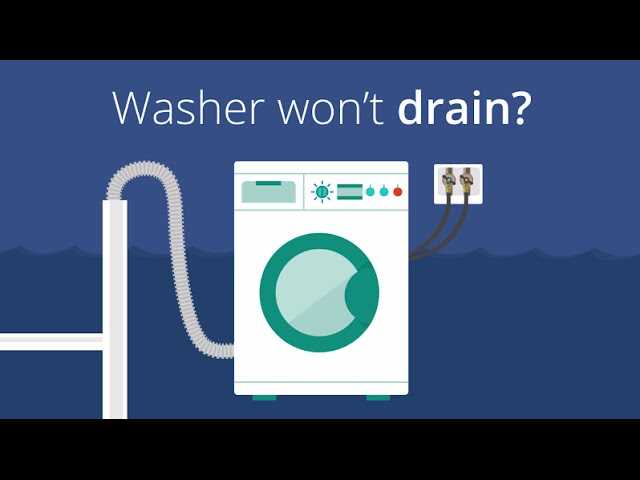
Having a clogged washing machine drain can be a frustrating and messy problem. It can cause your washing machine to overflow, leading to water damage and a big mess. To prevent this issue, follow these simple steps:
1. Use a lint filter
One of the main culprits of a clogged washing machine drain is lint. Lint can easily accumulate in the drain line and cause a blockage. To prevent this, make sure to use a lint filter. These filters are usually found near the top rim of the washer tub and can be easily removed and cleaned. By regularly cleaning the lint filter, you can prevent lint from clogging your drain.
2. Watch what you pour
Another common cause of clogged washing machine drains is pouring harmful substances down the drain. Oils, grease, and other chemicals can solidify and block the drain line. Avoid pouring anything other than water or mild detergents down the drain to prevent clogs.
3. Clean the drain line
If you notice that water is draining slowly from your washing machine, it might be time to clean the drain line. Start by unplugging the machine and turning off the water supply. You can use a manual snake or a drain cleaning tool to remove any debris or clogs. Simply insert the tool into the drain line and rotate it to break up the blockage. Repeat this process a few times until the drain is clear.
4. Prevent buildup with high-pressure water
If you have a severe clog that cannot be removed with a manual snake, you can try using a high-pressure water jet to clear the drain line. This method is best for completely unclogging the line and preventing future clogs. Simply connect a high-pressure water nozzle to a hose and spray it into the drain line to remove any buildup.
5. Avoid using harsh cleaners
While it may be tempting to use strong chemicals to unclog your washing machine drain, it’s best to avoid them. These cleaners can damage the washing machine’s plumbing system and cause more problems in the long run. Stick to simple and natural cleaning products like baking soda or vinegar.
6. Regularly clean your washing machine
To prevent smelly drains and other issues, it’s important to regularly clean your washing machine. Run a hot water cycle with a cup of vinegar or a specialized washing machine cleaning product to remove any buildup or unpleasant smells. This simple solution will keep your washing machine running smoothly and prevent clogs.
By following these preventive measures, you can keep your washing machine drains clog-free and avoid the unpleasant task of removing blockages. Remember, prevention is always better than cure!


